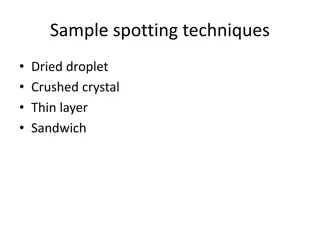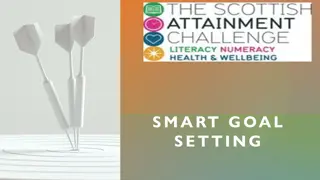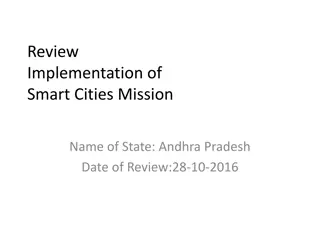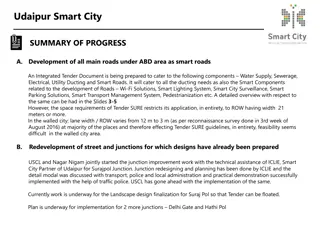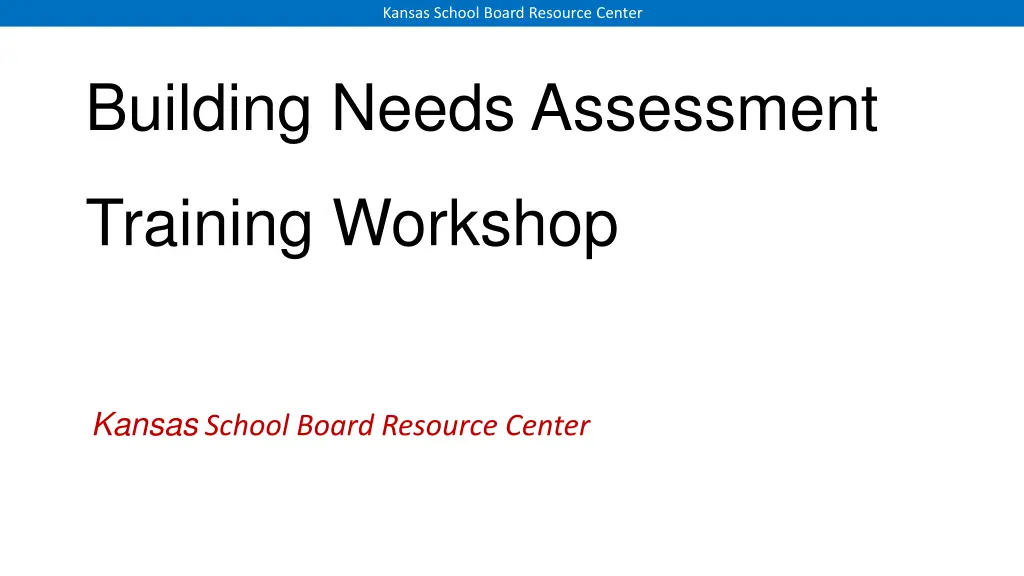
Building Needs Assessment for Academic Improvement
Discover the importance of building needs assessments in educational strategic planning for improved academic outcomes. Learn about setting SMART goals, prioritizing student achievement, and analyzing government-provided data to enhance educational quality.
Download Presentation

Please find below an Image/Link to download the presentation.
The content on the website is provided AS IS for your information and personal use only. It may not be sold, licensed, or shared on other websites without obtaining consent from the author. If you encounter any issues during the download, it is possible that the publisher has removed the file from their server.
You are allowed to download the files provided on this website for personal or commercial use, subject to the condition that they are used lawfully. All files are the property of their respective owners.
The content on the website is provided AS IS for your information and personal use only. It may not be sold, licensed, or shared on other websites without obtaining consent from the author.
E N D
Presentation Transcript
Kansas School Board Resource Center Building Needs Assessment Training Workshop Kansas School Board Resource Center
"You got to be careful if you don't know where you're going, because you might not get there." - Yogi Berra The building needs assessment exercise may be the most important responsibility for every school board. Basis for a strategic plan to improve outcomes, academically prepare students for life. Strategic plans that don t address the BNA questions will not get students the education they deserve.
Goals must be SMART Specific not improve but go from 25% proficient to 30%. Measurable fall, winter, spring progress reports Achievable you can t go from 25% to 75% in one year Relevant focused on students, not adults Time-Bound go from 25% to 30% in one year
Most strategic plans: all hat and no cattle Strategic priorities of USD 500 Kansas City High expectations for student achievement is #4 of five Students will have a strong academic foundation anchored by strong literacy skills 2023 USD 500 Kansas City Math 2023 Results by Grade USD 500 ELA Grade Level, Needs Remedial Training 55% 30% 62% 25% Grade Level, Needs Remedial Training 31% 18% Below Grade Level Below Grade Level Grade Proficient Proficient All Grades 10th Grade 58% 75% 11% 7% 15% 13% Source: KSDE; all students tested, rounded to the nearest whole number
Government-provided data: spending up, achievement down
ACT college-ready in English, Reading, Math and Science ACT College-Readiness; Per-Pupil Spending per KSDE 100% $18,000 $16,993 90% $16,000 80% $14,000 70% $12,000 $13,130 60% $10,000 50% $8,000 40% $6,000 30% $4,000 20% 24% $2,000 10% 19% 0% $0 '02 '03 '04 '05 '06 '07 '08 '09 '10 '11 '12 '13 '14 '15 '16 '17 '18 '19 '20 '21 '22 '23 $ Per-Pupil $ Inflation % College-Ready ACT Source: ACT, Kansas Dept. of Education, Bureau of Labor Statistics Consumer Price Index for Midwest Cities on fiscal basis.
State assessment only valid since 2015 State of Kansas - All Students Math State of Kansas - All Students ELA Grade Level, Needs Remedial Training 44% 38% 38% 38% 39% 38% 36% 36% Grade Level, Needs Remedial Training 37% 35% 34% 34% 34% 35% 34% 34% Below Grade Level Below Grade Level Year Proficient Proficient 2015 2016 2017 2018 2019 2021 2022 2023 23% 27% 28% 29% 28% 34% 34% 33% 32% 33% 33% 33% 33% 28% 29% 31% 21% 24% 27% 29% 29% 30% 34% 33% 41% 40% 37% 37% 37% 35% 32% 33% Source: KSDE; all students tested, rounded to the nearest whole number
Be aware of large achievement gaps 2023 State Assessment Results ELA At Grade Level, Needs Remedial Training 25% 26% Below Grade Level School Cohort Proficient Liberal Sr. High Liberal Sr. High Low-Income Not Low-Income 68% 61% 6% 13% Horace J. Good MS Horace J. Good MS Low-Income Not Low-Income 48% 29% 39% 43% 13% 28% Oakley Elementary Oakley Elementary Low-Income Not Low-Income 30% 21% 37% 38% 33% 41% State assessment results rounded to the nearest whole number
K.S.A. 72-1163 legal requirements Each year the board of education of a school district shall conduct an assessment of the educational needs of each attendance center in the district. Such assessment shall be published on the school district's website. Information obtained from such needs assessment shall be used by the board when approving the budget of the school district to ensure improvement in student academic performance.
You must answer three questions (each school) 1. What are the barriers preventing students from being proficient in reading and math? 2. What budgetary changes are needed to overcome the barriers? 3. With changes implemented, how many years to proficient (and/or below grade level)?
Most districts do not follow BNA law Dodge City: In 2022, district summary only; answers to Question #2 do not address the barriers identified in Question #1, and the response to Question #3 ( more than five years ) is not within the spirit of the law. In 2023, the district admits that board members did not attend meetings. Some districts don t answer the required questions. Many districts contend board members don t have to participate, just review the staff-prepared reports.
Kansas School Board Resource Center Part 1: Take Charge of the BNA Process
BNA is a legal obligation for board members Tell district staff to schedule meetings with each school, provide supplies and support as directed. District staff may attend to observe, but board members run the meetings. Require attendance for teachers and principals?
Discuss BNA meeting parameters in advance Don t let board policy get in the way. Assert your legal obligation to participate. No board member should be restricted in asking questions of staff. Encourage public to attend and observe.
Setting goals for the district leadership team KSDE target is 75% proficient (Levels 3 and 4). Eat the elephant one bite at a time. Be brutally realistic you won t get there in a few years. Allow for achievement gaps; set goals for each primary cohort. Low-income (free and reduced) Not low-income (self-pay lunch) Allow for grade-level and subject proficiency variances
Setting goals for the district leadership team USD 457 Garden City Math Low-Income Students Not Low-Income At Grade Level, Needs Remedial Training 37% 51% 33% 36% 49% 27% 19% At Grade Level, Needs Remedial Training 26% 46% 37% 30% 45% 30% 27% Below Grade Level Below Grade Level Year Proficient Proficient Grade 3 Grade 4 Grade 5 Grade 6 Grade 7 Grade 8 Grade 10 State assessment results for all students, rounded to the nearest whole number 28% 32% 55% 50% 39% 65% 77% 35% 17% 12% 14% 11% 8% 3% 12% 20% 35% 42% 27% 43% 58% 61% 34% 27% 29% 28% 26% 15% Achievement typically drops precipitously in elementary school and students never catch up districts must eliminate that inflection point.
Setting goals for the district leadership team Board members aren t expected to have the answers, but you must ask the tough questions. Why are the causes of achievement declines in early grades? What basic elements are missing in the curriculum? What s getting in the way (DEI, for example) and how do we remove those barriers? Wabaunsee s DEI solution No excuses it s management s job to create a plan to produce required outcomes within existing resources.
Kansas School Board Resource Center Part 2: Running Productive Meetings
Q1: Qualities of legitimate barriers Identify challenges that district staff can address. This is a problem-solving exercise, not Festivus. No generic barriers like money and staffing. No political statements. Be wary of topics over which schools have little control; focus on what you can do to ameliorate an issue. Early childhood needs Mental health (is DEI making it worse?) Lack of parental involvement
Q1: Qualities of legitimate barriers Encourage building staff to think ahead to Q2. Barriers should be actionable within existing resources. Ask probing questions. What s the basis for this as a barrier? Is there strong consensus on this barrier within the school? Emerson Elementary story is the staff a barrier?
Q1: Test the barriers; connect the dots Repeatedly emphasize that you re working together to build a student achievement plan. Tell district staff to prepare a specific achievement report for each school. Do barriers reflect the severity of the issue?
Q1: Prioritize the barriers Encourage staff to identify barriers to develop buy-in. List everything for staff to see. Then collectively agree on which are the top 3 or top 5 barriers to address with budgetary changes.
Q2: Legitimate budgetary changes This is about resource allocation, not a wish list for more $. Instruction costs associated with the direct interaction between students and teachers is the most important part of the education program, the very foundation on which everything else is built. If this function fails to perform at the needed level, the whole educational program is doomed to failure regardless of how well the other functions perform. KSDE Accounting Manual
Q2: Legitimate budgetary changes Staff needs to know what is available in the 2024 budget: USD 457: $19,204 per student total; $16,382 operating USD 274: $20,018 per student total; $17,845 operating USD 480: $19,742 per student total; $15,328 operating Budgets should be about priorities what can be cut back or eliminated to remove barriers? Hard numbers aren t necessary yet. Focus on the concepts with building staff; district staff can run numbers later.
Q2: Legitimate budgetary changes Use BNA meetings to develop lists of possibilities. Write ideas on big Post-It sheets for all to see. Encourage building staff to email with additional thoughts and ideas after the meetings. Answers to Question #3 will be addressed with district staff at subsequent meetings.
Kansas School Board Resource Center Part 3: Follow-Up Discussions with District Staff
BNA process tells you if you have the right leadership team BNA purpose: put a plan in place to achieve specific achievement goals with existing resources. Allocate staff and resources to achieve the plan. Don t try to fit the plan in existing structure; that s trying to disprove Einstein s definition of insanity. Emphasize the key principle. Improving outcomes is #1 priority. That means nothing gets in the way not DEI, extracurriculars, or existing management structure.
Board-driven process that lays out district staff primary responsibilities Staff must provide within the board-determined timeframe: Calculate costs to address each barrier. Provide commentary on barriers identified by building staff. Prioritize options to shift resources to address barriers. One week for board study, then a series of meetings to review with staff and select the options to address achievement barriers.
Board-driven process that lays out primary responsibilities for district staff Budgets should fulfill Instruction needs for improving achievement. Then allocate remaining resources as needed. Cost-saving opportunities are everywhere: What happens if we don t spend this (dues, travel, etc.)? Reduce costs with outsourcing & cross-district service-sharing. Are we losing money on food service? Are we fully utilizing bulk purchasing options?
Dealing with objections Keep the focus on the BNA purpose. Ask questions like Is (doing this or avoiding that) more important than improving achievement?
Kansas School Board Resource Center Part 4: Passing the Budget & Monthly Updates
Public budget hearing Keep the focus on the BNA process. The budget is built around targeted student achievement gains. Achievement handout for the public. The budget is designed to go from (A) specific 2023 state assessment results to (B) specific goals by (C) the end of a specific school year. Emphasize the major barriers identified and the related changes proposed in the budget.
Monthly progress reports Progress reports from at least one elementary, middle school, and high school principal at each board meeting. What are we doing differently, and why? How are we measuring progress? Student and staff reactions. How can parents and community leaders help? Educate the community; civic clubs, chamber of commerce.




